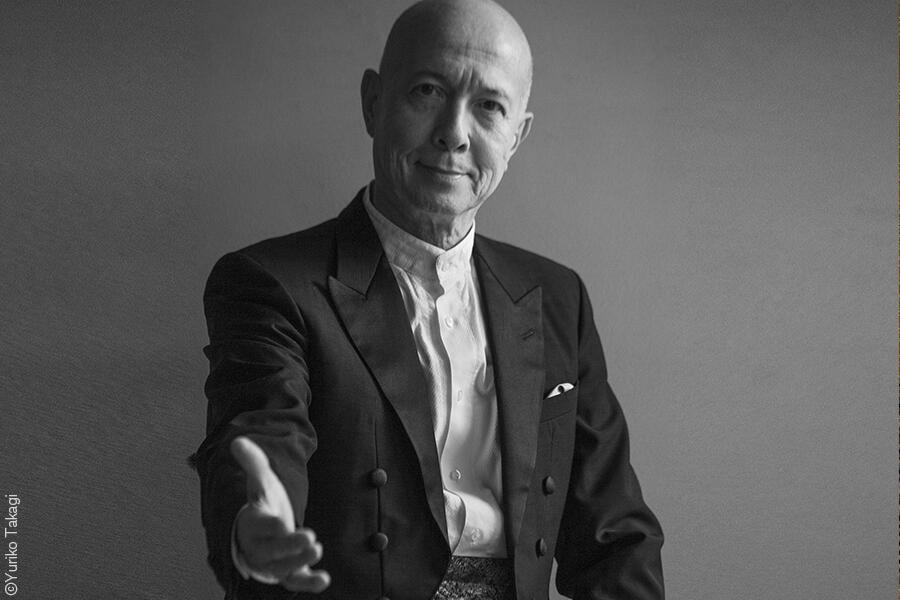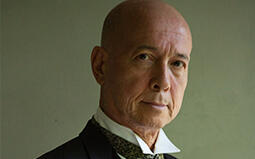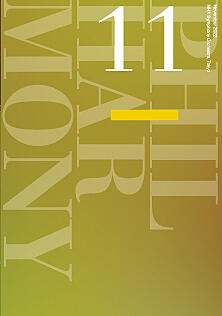- Home
- Concerts
- Subscription Concerts 2022-2023
- Program A
- No. 1968 Subscription (Program A)
No. 1968 Subscription (Program A)

Program
Ifukube / Sinfonia Tapkaara
A herald of Japan’s classical music, Ifukube beat a path for younger generations such as the world-famous composer Toru Takemitsu (1930–1996). Born in Hokkaido, the country’s northern island, Ifukube spent his childhood surrounded by folk tunes sung by different settlers and music of the Ainu, the local indigenous population. He took up playing violin before beginning to teach himself composition at age 15.
Ifukube’s style is marked by folk colors and powerful rhythms which he expressed precisely by his skillful orchestration. Also, he frequently made use of ostinato, technique of repeating persistently a rhythmic and/or melodic pattern. All these features are even found in the main theme he wrote for the 1954 movie “Godzilla.” While the soundtrack has brought his name to wide audience, he left us a number of important classical works. And its excellent example is Sinfonia Tapkaara composed in 1954 and revised in 1979.
Tapkaara is a ritual stomping dance of the Ainu. According to the composer, he wrote this sinfonia (symphony), one and only piece he named so, in empathy with the Ainu people and feeling nostalgia for his own boyhood. The first movement starts with a dignified introduction directly giving the melodious first theme. The soul-stirring Allegro main section reminds us of Stravinsky’s avant-garde ballet Rite of Spring (1913) repeating the first theme which now stomps with sharp accents. At the outset of the second movement, harp gives the descending theme, which would (later in a shortened shape) sound incessantly as an ostinato. The third movement is also dominated by “repetition” of rhythmic/melodic motifs and even of the same notes, which leads to the rousing ending with trancelike piccolo.
[Kumiko Nishi]
Shostakovich / Symphony No. 10 E Minor Op. 93
A contemporary of the Sinfonia Tapkaara, Shostakovich's Tenth was premiered in December 1953 in St. Petersburg (then Leningrad). It is said to have been composed in the summer of 1953 right after Joseph Stalin died in March, while some sources suggest that certain of the elements date back to the pre-Thaw period.
Unlike Rachmaninov, Stravinsky and others who fled to (or decided to stay in) the West, Shostakovich remained behind the Iron Curtain. Thus, he had been considered a Soviet-patronized composer who joined their propaganda. He certainly "rehabilitated" himself a few times creating "proper Soviet music" following infamous censorships. However, Testimony (1979) —a book published by Solomon Volkov as memoirs of Shostakovich—rewrote his image. Though the book’s genuineness is controversial, the composer is regarded today as a man who resisted the regime in spirit and revealed his real intentions in his music bravely but secretly. As for Op. 93, he explains in Testimony that it is about Stalin and the Stalin years and that the second movement is the dictator’s musical portrait. The work sounds undoubtedly dark and tragic except for the optimistic conclusion.
The extensive opening movement is in sonata form. At the start, cellos and basses intone the dusky first theme as if hesitantly, while the second theme given by solo flute over strings’ pizzicato becomes an ominous waltz. These two elements are developed to eventually reach an orchestral scream. Piccolo with a high-pitched voice ends feebly this movement. The second movement is a savage Scherzo which evokes belligerent military music, lacking any contrastive trio (central) section. After the "supposed" portrait of the oppressor, the composer himself appears during the dance-like third movement: here we hear clearly the famous DSCH motif consisting of four notes D–E flat–C–B (D–Es–C–H in German notation) after the German transliteration of his name (D. SCH ostakowitsch). The final movement has a slow introduction. Then an abrupt clarinet signal opens the clamorous main section. The DSCH motif is shouted out by the whole orchestra including tam-tam at the zenith, before being pronounced by horns, trombones and timpani each in turn in the breathtaking coda.
[Kumiko Nishi]
Artists
 ConductorMichiyoshi Inoue
ConductorMichiyoshi Inoue
Born in Tokyo in 1946, Michiyoshi Inoue studied under Hideo Saito at Toho Gakuen School of Music and launched his career internationally after winning the Guido Cantelli Conducting Competition in Milan in 1971. He has continuously served in positions such as Music Director of the New Japan Philharmonic and the City of Kyoto Symphony Orchestra, Principal Conductor of the Osaka Philharmonic Orchestra, and Music Director of the Orchestra Ensemble Kanazawa (presently Conductor Laureate) while also working with renowned orchestras such as the Chicago Symphony Orchestra, the Münchner Philharmoniker as well as serving as Principal Guest Conductor of the New Zealand Symphony Orchestra.
In 2007, he led a Shostakovich complete symphonies project with five Japanese and Russian orchestras which was a great success. He took a rest due to illness in April 2014, but he returned to the podium in October of the same year, and then as a general director, he created unrivaled stages of a new production of Mozart's Le Nozze di Figaro (stage direction by Hideki Noda) in 2015 and 2020, Bernstein’s Mass at the Osaka International Festival in 2017, and Don Giovanni (stage direction by Kaiji Moriyama), but in November last year, he announced on his blog that he would retire at the end of 2024. Therefore, every NHK Symphony Orchestra concert he conducts from now on will be a very precious opportunity.
Since his first collaboration with the orchestra in May 1978, he has conducted more than 70 concerts including those overseas, and he will be conducting the orchestra’s Beethoven 9th Symphony Concerts at the year end. Expectations are especially high for this month’s program featuring masterpieces of Akira Ifukube and Shostakovich, the composers he has been particularly known for.
[Katsuhiko Shibata, music critic]
Download
Ticket
Program A
No. 1968 Subscription
(Program A)
NHK Hall
Google Map
Seating Chart
Single Tickets Release Date
Pre-sales for Subscribers:Thursday, August 4, 2022
*about subscribers
Sale to General Public:Sunday, August 7, 2022
Price
| S | A | B | C | D | E | |
|---|---|---|---|---|---|---|
| Ordinary Ticket | 8,900 | 7,400 | 5,800 | 4,700 | 3,700 | 2,000 |
| Youth Ticket | 4,000 | 3,500 | 2,800 | 2,100 | 1,500 | 1,000 |
Seating chart Enlarge Print PDF
*tax included
*About Youth tickets (Available at N-Kyo Guide)
*Subscribers receive a 10% discount (Available at NHKSO WEB Ticket and N-Kyo Guide)
*For wheelchair-accessible seats, please refer to the N-Kyo Guide
Starting Dates of Ticket Sales
ANNUAL SUBSCRIPTION TICKETS/
SEASONAL SUBSCRIPTION TICKETS (AUTUMN) Mon., July 18, 2022 11:00am
[For Subscribers: Thu., July 14, 2022 11:00am]
Youth Tickets
Youth Tickets are great options for those of 25 years old and younger
WEB Select 3 Plus
Choose three or more of your favorite concerts and get a discount on single tickets
*Only available at NHKSO WEB Ticket NHKSO WEB Ticket (Accesible from Japan only)
For further information and subscription application
N-Kyo Guide TEL:0570-02-9502


